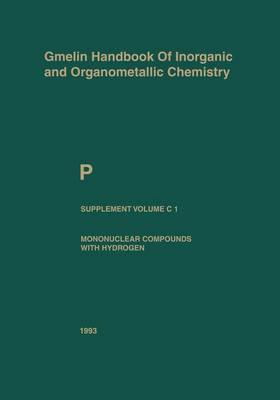Gmelin Handbook of Inorganic and Organometallic Chemistry - 8th edition
2 total works
N / 0-b / b / 2
N Nitrogen
by Reinhard Haubold, Claudia Heinrich-Sterzel, Peter Merlet, Ulrike Ohms-Bredeman, Carol Strametz, and Astrid Wietelmann
Published 20 October 1993
"Nitrogen" SuppL. Vol. 82 continues the description of binary compounds composed of nitrogen and hydrogen (nitrogen hydrides). While" Nitrogen" SuppL. Vol. 81 covers mono- nitrogen compounds, the present volume comprises compounds having two, three, four, or more nitrogen atoms. Hydrazine, N H , and its ions N2Ht and N2H~+ were not included. 2 4 (Reference is made to a voluminous monograph: E.W. Schmidt, Hydrazine and its Deriva- tives: Preparation, Properties, Applications, Chichester 1984, 1088 pages.) Among the dinitrogen compounds, the diazenyl cation, N H+, has been extensively inves- 2 tigated, especially in regards to spectroscopic and kinetic properties, because of its occur- rence in interstellar space. Chemically well-characterized are diazene, N H , the simplest 2 2 unsaturated nitrogen hydride which is used as a hydrogenation reagent, and the hydrazyl radical, N H , which is frequently present as an intermediate during the formation and 2 3 decay of nitrogen-hydrogen compounds. The major portion of this volume is taken up by hydrogen azide or hydrazoic acid, HN , the first member in the series of trinitrogen compounds.
Known to be highly explosive 3 in pure form, it can be safely handled when diluted. Thus, a great deal of information is available mainly on its properties as a chemical reagent and its decomposition processes.
Known to be highly explosive 3 in pure form, it can be safely handled when diluted. Thus, a great deal of information is available mainly on its properties as a chemical reagent and its decomposition processes.
P / a-c / c / 1
P Phosphorus
by Werner Behrendt, Ulrich W Gerwarth, Reinhard Haubold, and Joern v. Jouanne
Published 3 October 2013
This volume C 1 is the first supplement volume to "Phosphor" C which was published in 1965 and covers the compounds of phosphorus. Starting with the binary species formed between phosphorus and hydrogen, the present volume deals with the neutral mononuclear compounds PH through PH ; the ions featuring the same stoichiometric composition are s covered in separate sections. PH and PH are the major initial gaseous decomposition products of PH and, thus, also 2 J intermediates in many of its gas-phase reactions. Both molecules and their ions have been thoroughly investigated by a variety of modern, high-resolution spectroscopic methods during the last three decades. The coverage of their physical, and mostly molecular, properties re presents the largest part of the first two chapters (PH and ions pp. 2 to 47; PH and ions pp. 47 2 to 111). PH is the only compound described in this volume which is thermally stable under normal J conditions. It is the phosphorus analog of ammonia, but exhibits, however, a quite different chemical behavior towards most elements and compounds. The majority of its physical, and in particular spectroscopic, properties have been determined in great detail since the sixties, partially in regard to spectroscopic investigations of the atmospheres of the outer planets.

